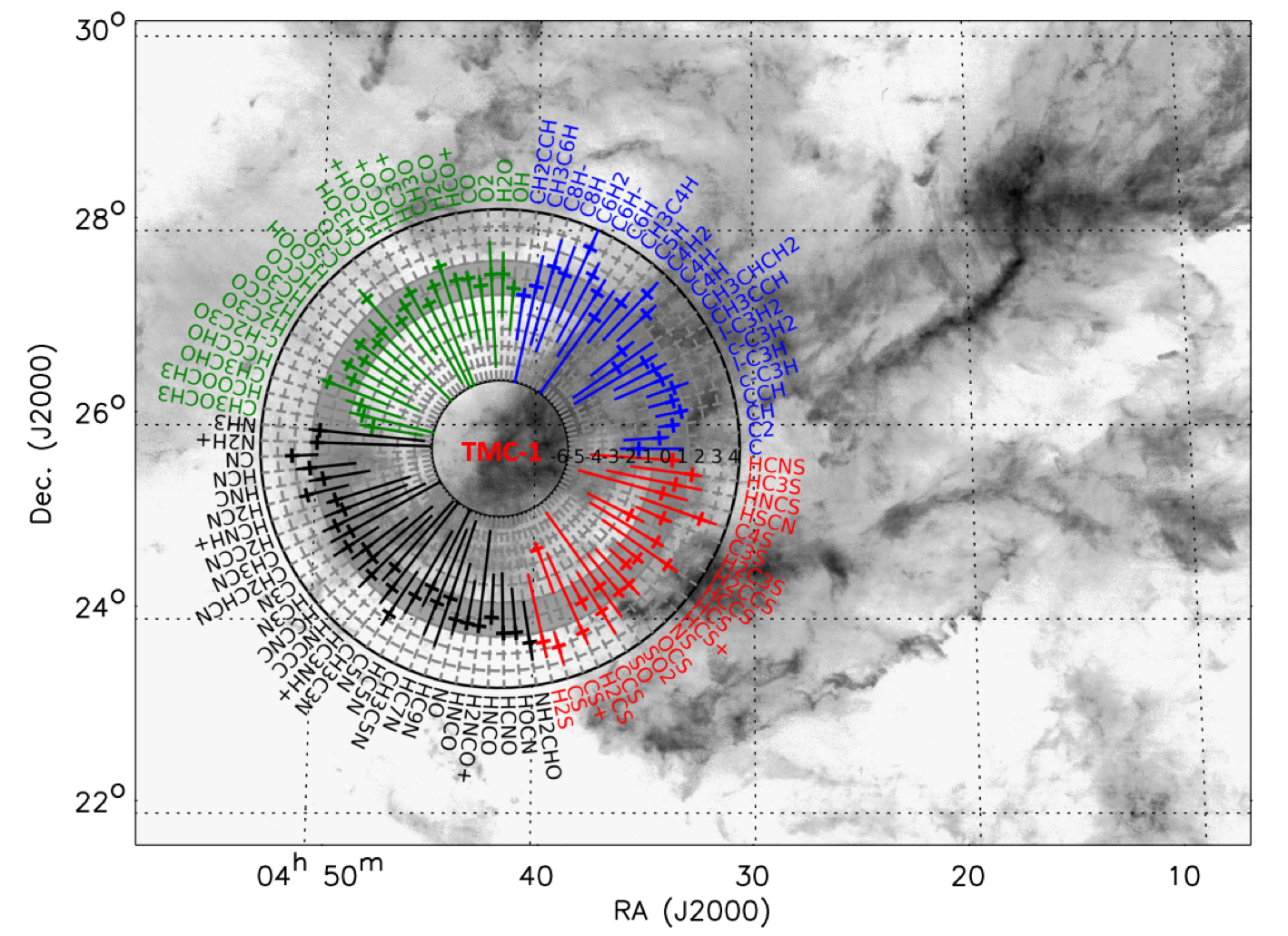NAOC astronomers trace the evolution of interstellar molecules in the Taurus molecular cloud-1
It is hard to imagine that molecules, which are common on the Earth, could survive in the harsh cosmic environments. However, it has been confirmed that molecules could exist in the interstellar conditions.
With the development of radio astronomy in recent decades, more than 200 molecules have been identified in the interstellar medium, including the large molecules, such as methanol, ethanol and urea. The Taurus molecular cloud-1 (TMC-1) has proven to be a typical astronomical sourcewith more than 100 molecules having been detected in it.
To study how the formation and conversion processes of the interstellar molecules happened, Dr. Long-Fei Chen, a Post-doctor in the Interstellar Medium and Star Formation Group from the National Astronomical Observatories of the Chinese Academy of Sciences (NAOC), built a physicochemical astronomical model under the TMC-1 condition. By classifying four different groups of molecules by their chemical characteristics, the formation, destruction, and conversion processes among these different groups of molecules have been examined. These processes are important clues for the understanding of the synthesis and origin of interstellar molecules.
Further comparison between the detected molecular abundances and the theoretical model predictions indicated that current astrochemical model can reproduce the abundances of 71% of the molecules, while the improvements for the over- and under-predicted molecules are proposed. The results also indicated that the percentage of interstellar ice mantle mixture is affected by the local extinction, which is important for the understanding of the interstellar ice chemistry.
“As part of the foundation of astrobiology, the main growth area of astronomy worldwide, astrochemistry is still in its infancy. This work represent a solid attempt at benchmarking models against a chemically rich nearby star-forming cloud”, said Dr. Di Li from NAOC, the corresponding author of the paper. The key collaborators also include those from the Xinjing Astronomical Observatory of CAS, and Shandong University of Technology.
The paper has been published on line at The Astrophysical Journal. It is accessible at https://iopscience.iop.org/article/10.3847/1538-4357/ac5a45
Figure 1: The abundance ratio between the model predictions and the observed values overlaid on the image of carbon-monoxide (Goldsmith et al. 2008). The majority of the ratio falls onto the gray zone, representing a difference within one-order-of-magnitude.